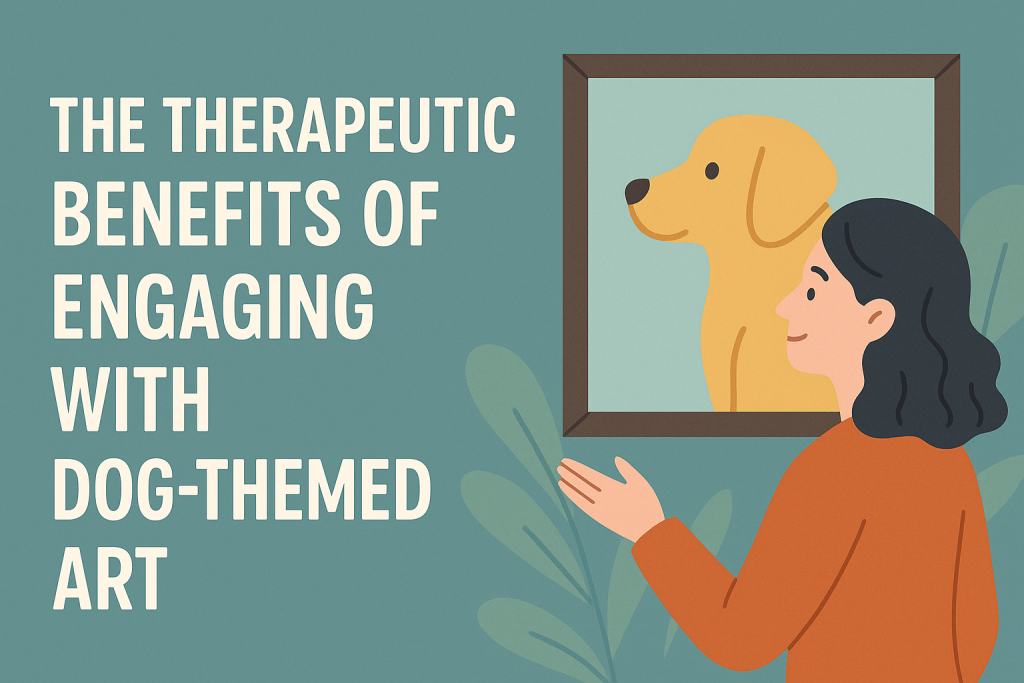Art depicting animals, particularly dogs, evokes diverse reactions rooted in psychology and biology. Studies indicate that looking at animals activates mirror neurons in the brain, sparking feelings of empathy and connection. Dogs, in art, often symbolize loyalty, joy, and unconditional love—qualities many people crave daily. The calming presence of dog imagery can be especially comforting after a stressful day, helping individuals rekindle a sense of security. Insights from Badlands Ranch superfood complete reviews demonstrate how discussions about dogs, whether in art or health, naturally promote a positive, communal mood among enthusiasts. It’s no coincidence that creative spaces such as galleries or even home decor frequently use dog motifs. These visual cues enhance mood and serve as conversation starters, bridging gaps between strangers with a shared affection for animals.

Dog Imagery and Stress Reduction
Research shows that viewing pictures of dogs can decrease cortisol—the body’s primary stress hormone. Artwork featuring playful, affectionate dogs often transports viewers back to joyful memories or happy places, minimizing feelings of anxiety. According to Scientific American, our deep attachment to dogs—rooted in millennia of shared history—makes dog-themed art especially impactful for soothing nerves. For many, surrounding themselves with such visual reminders is a daily check-in for emotional balance.
Interactive Dog Art Installations: Playful Healing
Interactive dog-themed art installations are on the rise in urban centers and museums. These include immersive spaces and outdoor sculptures encouraging play, touch, and real dog involvement. Such experiences foster mindfulness and laughter, drawing visitors into the present moment. Engaging with tactile or participatory art helps people break away from their routines, restore creativity, and strengthen the mind-body connection through playfulness—benefits that mirror what many experience when caring for real dogs.
Art Therapy Techniques with Canine Themes
Art therapy programs often incorporate animal themes due to their power to evoke emotional release and self-reflection. Techniques may include sketching personal pets, painting favorite breeds, or creating collages that represent cherished dog qualities. These exercises can help individuals process grief after losing a pet, foster gratitude, or boost their mood. Therapy settings—hospitals to community studios—report higher engagement when clients can relate to the subject, and dogs remain a top choice.
How to Try at Home:
- Draw or paint your dog’s portrait from memory or a photo.
- Make a vision board that includes dog-related hopes for the future (like training goals or travel plans).
- Create a collage of dog images—real or abstract—to reflect your mood.
Community and Social Connection Through Dog Art
Dog-themed art isn’t just personal; it brings people together for collective well-being. Murals in public parks or collaborative exhibitions foster pride and inclusivity, while social media groups abound with people sharing canine art to connect and inspire. Recent features from The New York Times highlight how online spaces for dog art have blossomed worldwide, helping individuals find belonging and build community, regardless of physical distance.
Everyday Inspiration: Bringing Dog Art Into Your Home
Incorporating dog-themed art into living or work spaces can turn everyday environments into havens of comfort and motivation. Framed prints, hand-painted mugs, or even whimsical dog sculptures add warmth and personality. In family settings, crafting sessions involving canine themes offer fun ways to strengthen relationships, creating lasting memories through art that doubles as décor.
Resources on Animal-assisted Healing
Learning about the therapeutic impact of both real and artistic dog interactions can deepen one’s appreciation and approach to self-care. Experts at mental health clinics and animal therapy nonprofits often share research-rich articles and practical guides. For those curious about the science behind the bond or community movements around animal art, both Scientific American and The New York Times offer accessible, reliable insight.
Ultimately, whether it’s a painting in your kitchen, a mural down the street, or a whimsical sculpture at an exhibit, dog-themed art can serve as a gentle, effective way to nurture emotional health and share joy—one brushstroke, doodle, or paw print at a time.